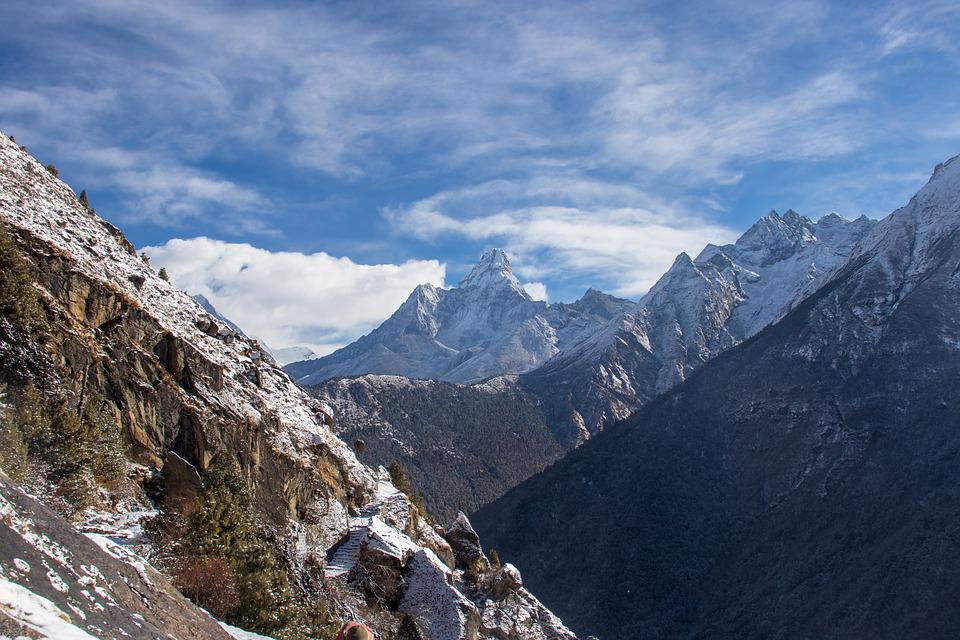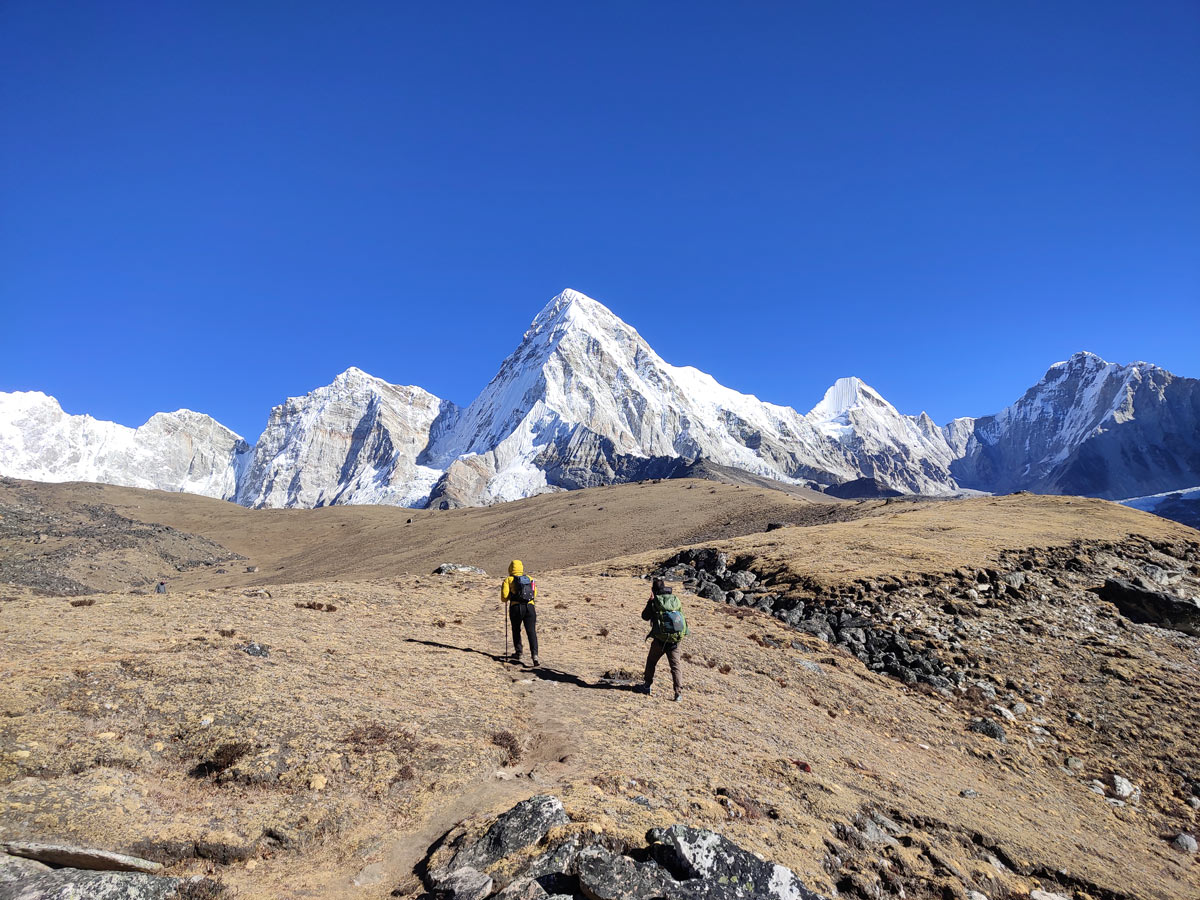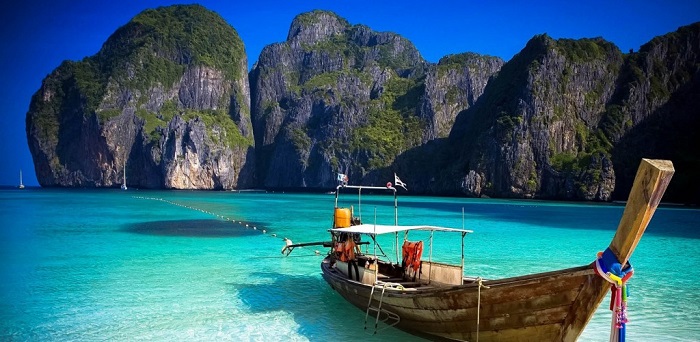
The Himalayas: A Journey to Everest Base Camp – Spiritual Awakening and Physical Challenge

The Himalayas, a colossal mountain range stretching across Asia, are more than just a geographical marvel. They are a realm of profound spiritual significance, a crucible of physical endurance, and a source of awe-inspiring natural beauty. Among the many trails and peaks that beckon adventurers and spiritual seekers alike, the journey to Everest Base Camp (EBC) in Nepal stands out as a particularly transformative experience. This trek is not merely a hike; it’s a pilgrimage into the heart of the mountains, a test of will, and an opportunity for profound self-discovery.
The Call of the Mountains: Why Everest Base Camp?
Everest, known as Sagarmatha in Nepali and Chomolungma in Tibetan, meaning "Goddess Mother of the World," holds an almost mythical status. It’s the highest point on Earth, a symbol of human ambition and the indomitable spirit of adventure. While summiting Everest is a feat reserved for highly skilled and experienced mountaineers, trekking to its base camp is an achievable goal for those with a reasonable level of fitness and a thirst for adventure.
The allure of EBC lies in its accessibility and the profound experience it offers. The trek winds through stunning landscapes, from lush green valleys to rugged, snow-capped peaks. It provides a glimpse into the unique culture of the Sherpa people, the legendary mountaineers and guardians of the Himalayas. And perhaps most importantly, it offers a chance to connect with nature on a deeply personal level, to challenge one’s physical and mental limits, and to find a sense of peace and perspective amidst the grandeur of the mountains.
The Spiritual Significance of the Himalayas
The Himalayas have long been revered as a sacred place, a haven for spiritual seekers and a source of profound wisdom. For centuries, yogis, monks, and pilgrims have retreated to these mountains to meditate, practice asceticism, and seek enlightenment. The towering peaks, the pristine air, and the sense of solitude all contribute to an atmosphere conducive to spiritual reflection.
- Hinduism: In Hindu mythology, the Himalayas are considered the abode of the gods. Mount Kailash, located in the Tibetan Himalayas, is believed to be the home of Lord Shiva, one of the principal deities in Hinduism. The Ganges River, which originates in the Himalayas, is considered sacred and is believed to purify those who bathe in its waters.
- Buddhism: Buddhism also holds the Himalayas in high regard. Many Buddhist monasteries are located in the mountains, offering a place for monks to study, meditate, and practice their faith. The concept of Shambhala, a mythical kingdom of peace and enlightenment, is often associated with the Himalayas.
- Sherpa Culture: The Sherpa people, who inhabit the Everest region, have a deep spiritual connection to the mountains. They are devout Buddhists and believe that the mountains are inhabited by deities and spirits. They perform rituals and make offerings to these spirits to ensure the safety and well-being of climbers and trekkers.

The journey to EBC can be seen as a spiritual pilgrimage, a chance to connect with the sacred energy of the Himalayas. The physical challenges of the trek can be a metaphor for the challenges we face in life, and overcoming these challenges can lead to a sense of empowerment and self-discovery. The solitude and silence of the mountains can provide an opportunity for introspection and self-reflection, allowing us to gain a deeper understanding of ourselves and our place in the world.
The Trek to Everest Base Camp: A Journey of Endurance
The trek to EBC is not a walk in the park. It’s a challenging journey that requires physical and mental preparation. The trek typically takes 12-14 days, covering a distance of approximately 130 kilometers (80 miles). The altitude gain is significant, starting at around 2,800 meters (9,200 feet) in Lukla and reaching 5,364 meters (17,598 feet) at EBC.
- Acclimatization: Altitude sickness is a major concern on the EBC trek. It’s crucial to acclimatize properly to avoid serious health problems. This involves ascending gradually, spending extra days at certain altitudes, and drinking plenty of water.
- Terrain: The terrain is varied, ranging from well-maintained trails to rocky paths and steep ascents. Trekkers should be prepared for uneven ground and challenging conditions.
- Weather: The weather in the Himalayas can be unpredictable. Temperatures can fluctuate dramatically, and snow, rain, and strong winds are common. Trekkers should pack appropriate clothing and gear to protect themselves from the elements.
- Physical Fitness: A reasonable level of fitness is required for the EBC trek. Trekkers should be able to walk for several hours each day, carrying a backpack weighing 10-15 kilograms (22-33 pounds).
- Mental Fortitude: The EBC trek is as much a mental challenge as it is a physical one. Trekkers should be prepared to push themselves beyond their comfort zones and to cope with the challenges of altitude, weather, and fatigue.
A Typical Itinerary: From Lukla to Everest Base Camp
While itineraries can vary depending on the trekking company and individual preferences, here’s a general outline of a typical EBC trek:
- Day 1: Lukla to Phakding (2,652m/8,700ft): A short and relatively easy trek to start, allowing you to adjust to the altitude.
- Day 2: Phakding to Namche Bazaar (3,440m/11,286ft): A challenging uphill trek, crossing several suspension bridges and offering stunning views.
- Day 3: Acclimatization Day in Namche Bazaar: Explore Namche, visit the Sherpa Culture Museum, and hike to a viewpoint for acclimatization.
- Day 4: Namche Bazaar to Tengboche (3,860m/12,664ft): A scenic trek through rhododendron forests, culminating in a visit to the Tengboche Monastery, the largest monastery in the Khumbu region.
- Day 5: Tengboche to Dingboche (4,410m/14,470ft): A gradual ascent through yak pastures, offering panoramic views of the surrounding peaks.
- Day 6: Acclimatization Day in Dingboche: Hike to a nearby viewpoint or relax and enjoy the scenery.
- Day 7: Dingboche to Lobuche (4,910m/16,110ft): A challenging trek through rocky terrain, with views of Mount Everest peeking through the clouds.
- Day 8: Lobuche to Gorak Shep (5,140m/16,863ft) and Everest Base Camp (5,364m/17,598ft): The big day! Trek to Gorak Shep, the last settlement before EBC, and then continue to Everest Base Camp. Spend some time soaking in the atmosphere and taking photos before returning to Gorak Shep.
- Day 9: Gorak Shep to Kala Patthar (5,550m/18,208ft) and Pheriche (4,240m/13,910ft): An early morning hike to Kala Patthar for breathtaking sunrise views of Mount Everest. Then, descend to Pheriche for the night.
- Day 10: Pheriche to Namche Bazaar: Retrace your steps back to Namche Bazaar.
- Day 11: Namche Bazaar to Lukla: The final trek back to Lukla.
- Day 12: Fly from Lukla to Kathmandu: A scenic flight back to Kathmandu, marking the end of your adventure.
The Sherpa People: Guardians of the Himalayas
The Sherpa people are an integral part of the EBC experience. They are renowned for their mountaineering skills, their resilience, and their deep connection to the mountains. For generations, they have served as guides, porters, and cooks, supporting climbers and trekkers from around the world.
The Sherpa culture is rich and vibrant, with its own language, customs, and traditions. They are devout Buddhists and believe in the power of prayer and ritual. Their hospitality is legendary, and they are always willing to share their knowledge and experience with visitors.
Trekking to EBC provides an opportunity to learn about the Sherpa culture and to support their communities. By hiring local guides and porters, staying in local teahouses, and purchasing local goods, trekkers can contribute to the economic well-being of the Sherpa people.
Preparing for the Trek: Physical and Mental Conditioning
Proper preparation is essential for a successful and enjoyable EBC trek. This includes both physical and mental conditioning.
- Physical Training: Start training several months before your trek. Focus on cardiovascular exercises such as hiking, running, and cycling. Incorporate strength training to build muscle endurance, particularly in your legs and core. Practice hiking with a weighted backpack to simulate the conditions on the trek.
- Mental Preparation: The EBC trek can be challenging, both physically and mentally. Prepare yourself for the challenges of altitude, weather, and fatigue. Practice meditation and mindfulness techniques to help you stay calm and focused. Visualize yourself successfully completing the trek and overcoming any obstacles that may arise.
- Gear and Equipment: Invest in high-quality trekking gear, including sturdy hiking boots, waterproof clothing, a warm sleeping bag, and a comfortable backpack. Pack light to avoid unnecessary strain on your body.
- Medical Check-up: Consult your doctor before embarking on the trek to ensure that you are medically fit. Discuss any potential health concerns and get any necessary vaccinations or medications.
Responsible Trekking: Minimizing Your Impact
It’s important to trek responsibly to minimize your impact on the environment and the local communities.
- Leave No Trace: Pack out all your trash and dispose of it properly. Avoid using disposable plastics and opt for reusable water bottles and containers.
- Respect Local Culture: Dress modestly, ask permission before taking photos, and be mindful of local customs and traditions.
- Support Local Businesses: Hire local guides and porters, stay in local teahouses, and purchase local goods.
- Conserve Water: Water is a precious resource in the Himalayas. Use water sparingly and avoid polluting water sources.
- Be Mindful of Wildlife: Observe wildlife from a distance and avoid disturbing their habitat.
The Rewards of the Journey: A Transformative Experience
The journey to Everest Base Camp is more than just a trek; it’s a transformative experience that can change your perspective on life. The challenges you overcome, the beauty you witness, and the connections you make will stay with you long after you return home.
- Physical Accomplishment: Completing the EBC trek is a significant physical achievement that will boost your confidence and self-esteem.
- Spiritual Awakening: The Himalayas have a profound spiritual energy that can inspire introspection and self-discovery.
- Cultural Immersion: The trek provides an opportunity to learn about the Sherpa culture and to connect with the local communities.
- Connection with Nature: The stunning landscapes and pristine air will leave you in awe of the natural world.
- Personal Growth: The challenges of the trek will push you beyond your comfort zone and help you grow as a person.
In Conclusion:
The Himalayas, and particularly the trek to Everest Base Camp, offer a unique blend of spiritual awakening and physical challenge. It’s a journey that will test your limits, inspire your soul, and leave you with memories that will last a lifetime. If you’re looking for an adventure that will change your perspective on life, consider embarking on this incredible pilgrimage to the roof of the world. Remember to prepare thoroughly, trek responsibly, and embrace the challenges and rewards that await you in the heart of the Himalayas.





